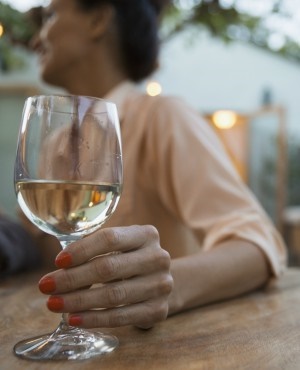
If you think a Lite beer has less alcohol, you believe one of the many myths about drinking.
The festive season is almost upon us, which means parties, braais and family get-togethers are in full swing. As the party mood takes hold, people tend to let their hair down and enjoy a few drinks.
Having two glasses of wine is nothing to worry about, right? Many people believe men can have two drinks and women one and still be within the legal limit when they get behind the wheel of a car. But in reality it’s much more complicated than that.
There are many myths surrounding alcohol consumption and drunk driving. In fact, you could be breaking the law without realising it.
The safest number of drinks
Instead of asking yourself how many drinks you can have before you go over the legal limit, Johan Jonck of ArriveAlive.co.za suggests you rather ask yourself how many drinks you should have before your driving is affected. And the answer to that is none.
“The thought that you’ve taken or destroyed someone’s life in a road crash could lead to psychological trauma even if you were within the legal limit,” he says.
“Your conscience may keep reminding you that the accident could have been prevented if you’d been 100 percent alert and capable of taking preventative measures.”
What is the legal limit?
- Drivers in general: <0,05 g/100 ml blood alcohol content OR <0,24 mg/1 000 ml breath alcohol content
- Professional Drivers*: <0,02 g/100 ml blood alcohol content OR <0,10 mg/1 000 ml breath alcohol content
1. Men can have two drinks and women one
This is a myth, says Angus MacArthur, general manager of Alcohol Breathalysers CC. Just because you’re a man it doesn’t mean you can have two beers without a worry in the world.
Several factors can influence blood alcohol content (BAC) – for instance if you’re small, you skipped dinner or you’re following a strenuous exercise regime. “The amount a person may consume to remain below the legal limit is dependent on body weight, body composition, metabolism and time taken to consume the alcohol,” MacArthur explains.
“Food in the digestive tract may absorb alcohol, allowing the body to cope with it over a longer period. Metabolism affects the speed at which alcohol is eliminated from the blood stream. Fitter people may feel ‘drunker’ quicker but will eliminate alcohol quicker than an unfit person.”
One drink isn’t always one drink, warns Caro Smit, director of South Africans Against Drunk.
Driving (SADD). “We should talk about units, not drinks,” she says. For example, 75 ml of red wine is one unit but a glass of wine at a bar is usually larger. A 250 ml glass, for example, equals 3, 5 units, which pushes most people over the limit.
2. I had only one drink an hour
It’s true you can usually get rid of one unit of alcohol an hour – but this rule applies to units, not drinks.
“If each drink contains more than one unit, for example four double brandies or four quarts, you’ll be over the legal limit even if you’ve spaced the drinks over four hours,” MacArthur says.
3. I drank beer, not hard liquor
Alcohol is alcohol and it all depends on the number of units you consume in a given period, MacArthur explains. “A quart of lager contains about four units of alcohol, which is equal to two double shots of whisky or vodka.”
And did you know there’s a difference between a Lite beer and a light beer?
People should be wary of drinks marked “Lite”, Smit warns. Lite stands for “light in total energy”. If it’s called light it’s lower in alcohol.
4. I'll be sober after a few hours of sleep
You’ve had a big night out, drinking until the early hours. You did the responsible thing and took a taxi home but now, after a few hours’ sleep, you get behind the wheel of your car. Beware – you could still be over the limit.
“Sleep doesn’t sober you up. You need about one hour for every unit of alcohol consumed before you get back to zero,” MacArthur explains.
If you’ve had three quarts of lager, which contain four units each, it will take 12 hours before your blood alcohol content reaches zero.
5. Coffee will sober me up
You may feel more alert after a cup of coffee but don’t let that fool you. “Coffee contains caffeine, which is a stimulant. It may make you feel like you’re sobering up but you’re not. It will not reduce the amount of alcohol in your blood,” MacArthur says.
“Only time gets rid of alcohol,” Smit adds. “Not coffee, not water, only time.”
6. You can trick a breathalyser
Salt on your tongue, chewing gum or smoking won’t change the outcome of a breathalyser test.
“Police use only fuel-cell and infrared sensor breathalysers, which aren’t affected by gums and lozenges,” MacArthur says.
7. I drive better if I've had one or two drinks
Even small doses of alcohol can impair your visual functions, causing longer eye fixation time, tunnel vision and defective attention switching, says Johan Jonck of ArriveAlive.co.za.
Driving requires multitasking and even a low BAC impairs rapid information analysis, delaying prompt and appropriate decision-making, he adds. MacArthur agrees.
“Alcohol acts as a depressant and sedative affecting your body’s nervous system. Your reaction speed, concentration and vision will be affected by just one unit of alcohol.”
You’re at great risk of dying in a car crash even if you stay within South Africa’s legal limit, according to the World Health Organisation’s Global Status Report On Road Safety 2015. Your risk of dying in a car crash is three times greater with a BAC of between 0, 02 and 0, 05 percent than if you haven’t had alcohol.
8. I'll just drive slower
No matter your speed, if cops stop you while you’re drunk expect to spend the night in jail. And slowing down won’t prevent you from causing a serious accident.
If you drive in front of a lorry or hit a pedestrian you could still cause serious injury or even death, MacArthur says.
How to have a good time and be safe
1. Appoint a designated driver
Take turns among your friends to be the designated sober driver.Also, if you plan a party, consider organising transport.
For instance you could hire a minibus to shuttle your wedding guests to and from the venue.
2. Learn the alcohol units of various types of drink
- 75 ml red wine: 1 UNIT
- 90 ml white wine: 1 UNIT
- 340 ml cider: 2 UNITS
- 300 ml spirit cooler: 1-2 UNITS
- 440 ml beer: 2,2 UNITS
- Cocktails: 2,5-4 UNITS
3. Use a taxi service
If you know you’re going to drink, don’t drive to the party. Rather call a taxi. Take-me-home services will send a driver to your destination to drive you and your car home (book in advance). Check your life insurance policy – some offer a take-me-home service a few times a year.
*People who transport goods, dangerous substances or passengers for income. The limit takes into account that drivers may be taking medication containing alcohol.
All values quoted in this article are approximate. The safest rule is to consume no alcohol before driving.




 Publications
Publications
 Partners
Partners
















